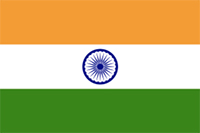

 印度
印度 印度→迈索尔→瑜伽游学
印度→迈索尔→瑜伽游学1.学校简介
Mysore Mandala Yoga Shala是一家瑜伽和文化中心,成立于2001年,位于迈索尔市Lakshmipuram的一个百年历史建筑中,主要通过Yogacharyas Krishnamachar和Pattabhi Jois教授的传统方式传承Ashtanga Vinyas Yogasana,迈索尔风格的迈索尔。
Mysore Mandala Yogashala由商人Shri N Harish Bheemaiah创立,旨在将印度文化和瑜伽传播到世界各地。曼陀罗在Ashtanga Vinyasa瑜伽,Hatha瑜伽,Ayurveda护理,Ayurveda按摩,音乐以及印度古典舞蹈和艺术等领域都是通往迈索尔的印度文化的门户。
这些课程是由在各自领域拥有数十年经验的敬业教师讲授的。
与曼陀罗相连的舒适咖啡馆,为学生和访客提供Sathvic食品和纯咖啡,这是一种享受。
迈索尔曼陀罗瑜伽Shala是印度Earth.org.GmbH所着的《 YOGA INDIA》一书中确定并出版的印度前24名瑜伽学校之一。曼陀罗还被英国监护人评为印度十大瑜伽学校之一,在印度练习瑜伽。
在过去的12年中,具有代表性的传奇老师Vidhvan Shri BNS Iyengar教授了Pranayama,Mudra和Philosophy的课程,他在90年代身体健康,也是Vidhvan Krishnamachar和Mysore的Pattabhi Jois的坚定追随者,对于喜欢深入了解该主题的真正知识的学生来说,这是一个机会。
2.课程介绍
Yoga Teacher Training in Mysore
Yoga Teacher Training
The teacher training is an in-depth study and a transformation journey of the body, mind and spirit. It teaches you to be a teacher in yoga. The course is based on the traditional Gurukula system where students will come to the teacher’s place of practice for their yoga teacher training.
The teacher training course (TTC) is an intensive course that is being taught by experienced teaches of Mysore.
The curriculum is as follows:
asana (yoga postures)
pranayama (breathing exercises)
meditation
Anatomy,
mantras,
yoga philosophy,
Introduction to ayurveda
Therapeutic impotance of yoga
There will be special classes to study teaching techniques and alignment. Both these are of importance as a ‘teacher’ to be. Students will develop their skills to teach asana, as well as to improve their own personal practice and get the right knowledge about “yoga “.
CORE PRACTICE AND TEACHING SKILLS
The power of Vinyasa Flow
Yoga Asana: Movements, actions, alignment and energetic
Sequencing: Form, movement, energetic and intention
Hands-on Adjustments: The power of touch
Practice Teaching
Core Teaching Skills: Language, observation & ethics
Reading the Student: Teaching all levels and ages
Pranayama: The Yoga of breathMeditation: Directing the mind and healing the heart
YOGA PHILOSOPHY AND SCIENCE
The Yoga of Food: Basic yogic diet and nutrition
Yoga Philosophy: Sacred texts
Yama and Niyama: The universal laws of life
Prana: The power of Yoga, life and healing
GENERAL SCHEDULE
Please contact your teacher for your schedule at the time of joining into for your class.
The course is for 4 weeks and each week will have 6 days of practice. Sunday is a day off. Also if you class happens fall on a new moon or full moon day it will be a holiday.
Below would be a basic schedule.
6.00 – 8.00 am Ashtanga vinyasa – asana practice.(monday to saturday)
10.00 – 11:30 am patanjali yoga sutras, therapeutic importance of yoga, an intro to ayurveda(monday to friday)
11.40 – 1:00 pm basic pranayama & mudras, advanced pranyama & meditation.(monday to friday)
1.00 – 3.00 pm Lunch/Break.
3.00 – 4.30 pm special class (learning teaching techniques, alignment or adjustment, power of touching monday to wednesday).
2.00 _ 3.00 pm yoga anatomy (thursday nad friday)
Additionally, TTC students will be provided few classes where they can teach primary series Under the supervision of teacher so they can understand the methods and the techniques to Get the teaching experience which is really helpful to get the teaching knowledge which also boost your confidence as teacher.
After completion of TTC you will be given TTC completed certificate. People who want to do TTC they have to register their name with us before the TTC course Starts. Any further information you can contact to our e-mail id or call to our contact number. We will try to provide our Best Service.
Ashtanga Vinyasa Yoga
Astanga Vinyasa Yoga is a disciplined Sequence of asana syncronised with breath, count, sight (gaze) and posture (Vinyasa) . In Astanaga vinyasa yoga breathing deep into the back of the throat (ujjayi breath) air is converted to oxygen which detoxifies the blood , the physical benefits are longevity, intelligence, superior health, elimination of all body fat (impurities) a strong flexible body and leave you with a pure mind Although these are apparent side effects of the practice the main physical purpose is to purify the system and strengthen the pulse and bones.
People who wants to study Traditional method of Ashtanga Vinyasa Yoga , We well come you to Mysore mandala Yoga shala . Each student will taken care and help them to understand the proper moments , Breathing , alignment of there body.
Here Ashtanga Vinyasa yogasana teaches in three stages,
Primarykram-3
Intermediate
Advanced Series (A & B)
Here you can Experience practicing Ashtanga Vinyasa yoga in different levels, primary , Intermediate and Advance A & B series with experience teacher (T&C apply).
On Demand private classes are also be taken for beginners and for Intermediate series. (T&C apply).
TIMINGS :
6 .00 to 8. 00 am morning.
4. 30 to 6.30 pm evening.
Ashtanga Vinyasa yoga / Hata Yoga TTC
The teacher training is an in-depth study and a transformation journey of the body, mind and spirit. It teaches you to be a teacher in yoga.
The course is based on the traditional Gurukula system where students will come to the teacher’s place of practice for their yoga teacher training.
e teacher training course (TTC) is an intensive course that is being taught by Sri Dr Nagaraj and Sri Yogachari M V Chidananda (Ashtanga Yoga) & S RAMESH KUMAR (Hata Yoga).
The curriculum is as follows:
asana (yoga postures)
pranayama (breathing exercises)
meditation
chanting,
mantras,
yoga philosophy,
diet,
Kriyas (cleansing exercises to purify the body).
There will be special classes to study teaching techniques and alignment. Both these are of importance as a ‘teacher’ to be. Students will develop their skills to teach asana, as well as to improve their own personal practice and get the right knowledge about “yoga “.
CORE PRACTICE AND TEACHING SKILLS
The power of Vinyasa Flow
Yoga Asana: Movements, actions, alignment and energetic
Sequencing: Form, movement, energetic and intention
Hands-on Adjustments: The power of touch
Practice Teaching
Core Teaching Skills: Language, observation & ethics
Reading the Student: Teaching all levels and ages
Pranayama: The Yoga of breathMeditation: Directing the mind and healing the heart
YOGA PHILOSOPHY AND SCIENCE
The Yoga of Food: Basic yogic diet and nutrition
Yoga Philosophy: Sacred texts
Yama and Niyama: The universal laws of life
Prana: The power of Yoga, life and healing
GENERAL SCHEDULE
Please contact your teacher for your schedule at the time of joining into for your class.
The course is for 6 weeks and each week will have 6 days of practice. Sunday is a day off. Also if you class happens fall on a new moon or full moon day it will be a holiday.
Below would be a basic schedule.
6.00 – 8.00 am Ashtanga vinyasa – asana practice.
8.00 – 9.45 am Breakfast.
10.00 – 10:30 am Optional Early pranayama practice – Suryanamaskar.
10.30 – 1:00 pm theoretical explanation of yoga, philosophy, pranayama practice.
1.00 – 3.00 pm Lunch/Break.
3.00 – 4.30 pm special class (learning teaching techniques, alignment or adjustment, power of touching).
Additionally, TTC students will be provided few classes where they can teach primary series Under the supervision of teacher so they can understand the methods and the techniques to Get the teaching experience which is really helpful to get the teaching knowledge which also boost your confidence as teacher.
After completion of TTC you will be given TTC completed certificate. People who want to do TTC they have to register their name with us before the TTC course Starts. Any further information you can contact to our e-mail id or call to our contact number. We will try to provide our Best Service.
Ayurvedic Therapeutic Massage
Ayurvedic massage course tutor & consultant
Dr Ramesh Kumar. K.L. BAMS. MD(Ayurveda).
Dr Ramesh is working in Government Ayurvedic Hospital in Mysore. He is available for consultation & also he teaches ayurvedic massage.
To attain
A basic understanding of anatomy.
Understanding of indications and contraindications for massage.
Physiological and Therapeutic aspects of massage.
Types and techniques of ayurvedic massage Oil massage, Dry massage.
Types and properties of oils and powders applied.
Theory and practice of massage.
Back Bending Classes
Taking care of your spine is a key part of practicing yoga. A stiff spine is not only uncomfortable, but it can also be the cause or symptom of many other troubles in your body.
There’s a saying in yoga: You’re as young as your spine is flexible.
Practicing yoga can create suppleness and ease that will aid in all of your movements in everyday life, and perhaps even keep you young!
Back Bending
Tutor: Rudresh
Time: 3.30 pm
Sunday Holiday
Shivayogi Rudersh is from Kadur town he is been practising yoga regularly since he was 8 years old under guidance of his GURU Sri Shivakumarand Naveenkumar in Ashtanga yoga
He is teaching from 2 years in Mysore.
Below some of his Achievements in yoga
He has secured first place in NATIONAL & INTERNATIONAL LEVEL YOGA competitions in variours parts of India
Bharath Natyam Dance
Familiarity with basic steps used in Bharathnatyam
Understanding meaning and execution of the main mudra used.
Performance of one complete dance routine.
Appreciation of Karnatic Music used as accompanyment.
Teacher : Chetana Radhakrishna
Duration : 10 days
Hata Yoga
System works through the mastery of the body & breath.
It involves a system of exercise that trains through physical postures, breathing & relaxation techniques.
The aim is to promote vibrant health & to tap into the body’s latent energy reserves.
Tutor: Mr. Ramesh kumar
On Demand private classes are also be taken for beginners and intermediate series. (T&C apply)
TIMINGS:
07:00 AM TO 04:30 PM.
Samskritam (Sanskrit)
To gain an understanding of :
The Sanskrit sound system and script.
Basic vocabulary – things, animals, numbers, etc …
Simple conversational sentences.
Nouns, pronouns, numbers, gender, case etc …
Verbs – tenses, moods, participals etc …
Sentence structures.
Adjectives and adverbs.
Saandhi – ellision and scansion variations in pronunciation when words are spoken together.
Simple subhashitanis. These are wise sayings or proverbs relating to correct action in life.
Simple prose reading and comprehension.
Simple word building and the compounding of words.
The derivation and importance of the names of common yogasana.
Shatkriya Classes
According to tridosha theory (one of the fundamental theory of Indian medicine), the human body is made by three basic constituents called tridoshas, which are Vata( mechanical functional constituent of the body), Pitta(chemical functional constituent of the body) and Kapha( material functional constituent of the body).If any imbalance in the constituents in the body leads to diseases. Yoga recommends six purification processes to get and keep the equilibrium of these tridoshas. They are called as Shat kriyas (six purification processes).
They are:
Neti-Nasal cleansing.
Dhauti-Cleaning of digestive tract, stomach.
Nauli- Abdominal massage.
Kaphalabhati-Purification of frontal lobes and lungs.
Basti-Colon cleaning.
These six cleansing processes are excellent practises designed to purify the whole body, and to get good health.
Teacher : Yogacharya V.Shantaram
Duration : 1 Month
The Therapeutic Importance to Yoga
Learn about the principal aspects of ayurveda with respect to:
Diet & Shatkrias (cleansing therapeutic measures) and their role in the treatment of common diseases.
Demonstration of some of the Shatkrias as Neti, Nauli, Kapalabhati, Dhauti(shankha prakshalana).
Gross Anatomy & Yogic management of important diseases. (a) Lungs (b) Heart (c) Blood pressure (d) Digestive system (e) Uroenital system (f) Lymphatics.
General precautions necessary in management of hypertension and cardiac inefficiency.
Teacher: Dr. V.Nagaraj
Duation: 10 Hrs.
Yoga Anatomy
Yoga Anatomy Course
(Basic and Advanced)
Duration: Each 10 hrs
Tutor: Dr Shashirekha
Contents:
Basic course:
Introduction
Fundamentals- breath, bandha,drishti and vinyasa
Connective tissue & difference systems in the body (skeletal,muscular,circulatory and respiratory)
Dynamics of breathing
Yoga and spine (anatomy, stretch,foot positions)
Pelvis and hip joint
Advanced course:
Preview of basic course topics
Inside the asanas
Anatomy of Standing poses, Sitting poses, Kneeling poses, Supine pose, Prone poses, Arm support poses
Pranayama
Basic Pranayama, Advance Pranayama & Mudras
Gain understanding of the theory and philosophy of pranayama.
Gain understanding of the importance of maintenance of correct posture during pranayama.
Gain an awareness of esoteric human anatomy nadi, chakras etc …
Practice of basic and advanced pranayama practices.
Nadi Shodana nerve cleansing
Sama Vritti
Vishsama Vritti
Shakti Chalana
Gain understanding of the diet necessary to support and enhance a pranayama practice.
Ayurvedic Insights
Biorhythms and Ayurveda: Understanding the Cosmic Dance
Health is a harmonious relationship of mind, body and spirit with our extended body i.e., environment. Health is also a harmony of all the rhythms in our physiology. As the rhythms influence the physiology of the universe, so do they affect the physiology in our body. As is the macrocosm, so is the microcosm. Universe operates in biological rhythms and so does our body. Rhythms of nature, music of nature and dance of nature is all reflected with in our body. When our internal rhythms are in synchrony with those of the environment we experience well being Every cell, organ and system in our body operates according to predictable rhythms, with periods of dynamic activity and times of quietness. These same patterns of rest and activity can be found with in the cycles of nature: the sun rises, shines brightly and sets; the seasons flow one in to another and the tides rise and fall in response to the moon’s influence.
In Part I we discussed the Circadian Biorhythms and their effect on our physical and mental bodies. In Part II we will discuss the other biorhythms namely, Seasonal rhythms, Lunar rhythms and Tidal rhythms.
Seasonal Rhythms: the 12 month cycle caused by the rotation of the earth around the sun.
Lunar Rhythms: the monthly cycle of the moon revolving around the earth
Tidal Rhythms: the gravitational influence of the moon on the waters of the earth
Seasonal Rhythm
According to Ayurveda, seasonal rhythms have important influences on our biological cycles, and each season expresses characteristics of a specific dosha. Autumn and early winter is Vata time with the cold, dry and windy weather. The hot, moist summer expresses the qualities of Pitta, while the cold and wet weather of late winter and spring are expressions of Kapha in the environment.
The body needs to adjust to the outside environment and food is one way to help the body accommodate the changes in season. Every season brings about nurturing qualities and the body needs to plug into nature for its rejuvenation. In the absence of this, the body tends to compromise its natural defenses that the system needs to build up. The other way to achieve balance is through life style modification and preventative measures. During summer, (June through October) which is a pitta season, individuals are prone to skin ailments like sunburn, acne etc., and so it is recommended that cool, light fruits and salads have to be consumed to calm and correct the imbalances caused by excessive pitta.
Ayurveda teaches that routine detoxification can be invaluable for maintaining good health during seasonal changes. Summer is the season where pitta dosha accumulates in the body. Particularly if an individual’s constitution is pitta predominant, the increase in excess heat can become reactive, settle in the tissues, and manifest as an imbalance if it is not properly eliminated. Ayurveda offers solutions to help the body dispose of toxins as nature intended before they have a chance to take hold and cause disorder. When there is an excess of pitta dosha and a health problem arises, toxins usually accompany it. Common toxins are bacteria, viruses, drugs, heavy metals, pesticides, chemicals, and other environmental pollutants. Toxins are also formed when we eat foods that are difficult to digest or of poor quality. Ayurveda defines this type of toxic material as ama, a heavy, sticky, undigested residue that can weaken digestion and disturb proper tissue formation.
Excess pitta can manifest in the body as:
Fever
Infection
Inflammation
Indigestion, constipation or diarrhea
Skin rashes, sores or ulcers
Fungi, parasites
Bad breath and body odor
Excessive sweating
Bleeding
Hyper-acidity
A person’s complexion may also be an indication of whether or not there is a toxic overload in the body. Excess pitta in the blood can result in breakouts on the skin such as hives, acne, and red rashes. Cleansing the body, particularly the liver and blood, through diet and herbs can result in clear, radiant skin and more balanced pitta dosha. There are many causes that contribute to an excessive amount of pitta in the body including:
Eating a pitta-provoking diet
Exposure to chemicals
Too much sun exposure, sunburn
Emotional stress
As with any imbalance, Ayurvedic treatment involves first removing the cause and then applying the therapeutic remedies necessary to bring the body back into balance. Ayurveda offers simple and gentle dietary, herbal, and lifestyle guidelines to assist the body in removing excess pitta dosha and cleansing the body of toxins. The therapies to balance pitta are both cooling and reducing.
Diet
The stomach and small intestine are two common sites for pitta dosha to accumulate. Ayurveda uses a pitta-soothing diet as the first line of action when addressing excess pitta. When it comes to reducing pitta, choose foods that will be cooling and cleansing to the body.
Simple dietary guidelines to help your body detox:
Choose sweet, juicy fruits like melons, plums, and peaches.
Include vegetables that are bitter and astringent such as collards, kale and asparagus.
Add digestive spices to your food such as cumin, coriander, fennel and turmeric.
Limit hot, spicy, fermented, salty, oily, fried foods.
Reduce or eliminate alcohol and caffeine. These substances are both sharp and hot, provoking to pitta dosha.
Drink plenty of cool, fresh water. Staying well hydrated helps the body to flush away toxins.
Favor cool, sweet, bitter, astringent, and oily foods; minimize hot, spicy and salty ones.
Appetite may be reduced; don’t overtax it.
Reduce exercise and sunbathing.
Swimming is a good exercise in summer, as is walking in the moonlight, forests, mountains, or gardens.
Wear a hat and sunglasses outdoors.
Summer Routine:
During autumn and early winter, (October through February) which is the vata season, people are prone to arthritis, rheumatism etc and so it is recommended that people eat warm, oily and hearty meals like beans, whole grains and meats to lubricate the system against dryness of the Vata season.
When vata dosha predominates, there is an increase in the dry, rough and cool qualities of our external and internal environments. In excess, dryness can begin to disturb various tissues and organs. Most noticeably, dry skin and lips are examples of excess vata. An internal drying can also be occurring particularly in the colon or large intestine, where vata is prone to first accumulate. Though we all notice the seasonal effects of autumn, people whose constitutions are vata-predominant and the elderly, who are in the vata stage of life, are most susceptible to this change.
Symptoms of vata-aggravation are:
dry skin and lips
constipation
gas
bloating
little or low appetite
hiccups
anxiety
fear
scattered mind
Diet
Foods that are in season such as root vegetables and winter squash will help nourish and balance the body. Try carrots, beets, sweet potatoes, pumpkin, acorn, butternut, delicata and buttercup squashes. These have the qualities of sweet, heavy, smooth, dense and moist and are most balancing for vata. To help pacify vata dosha, favor the tastes of sweet, sour, salty in your diet, while limiting bitter and astringent tastes. Some sweet grains to include this season are basmati rice, wheat berries, brown rice and sushi rice. Also, whole wheat pasta and or buckwheat udon noodles can be especially grounding for vata. Include ghee and other healthful oils such as almond, sesame or sunflower for internal oleation, kindling agni and increasing absorption. When preparing food, use warming spices such as black pepper, dry ginger, cinnamon and asafoetida to help to stoke the digestive fire. Casseroles, soups and stews are easily digested and can be very nourishing for vata, warming the body from the inside out.
Other important dietary guidelines for balancing the body:
Eat at routine times each day, having lunch be the largest meal.
Take time to lovingly prepare and enjoy nutritious meals.
Avoid ice cold drinks, particularly taken with meals or immediately after.
Limit raw, cold foods such as salads and raw vegetables.
Minimize caffeinated beverages and other stimulants. These increase vata, aggravating the nervous system.
Include warm milk spiced with a pinch of ginger, cinnamon, cardamom and nutmeg. This is a nutritious way to soothe the nerves and, when taken before bed, will promote sound sleep.
Lifestyle
Our daily activities have a profound effect on our health. A routine, practiced daily, is stronger medicine than an occasional remedy. Consistency is of particular importance as we enter into vata season. When the cool, fall weather arrives and the holiday season is upon us, it can sometimes be difficult to maintain a peaceful, grounded state of being. Having a routine to follow restores balance throughout the day, everyday, safeguarding against the anxiety and stress associated with increased vata. According to Ayurveda, abhyanga, or oil massage is an essential component to a daily routine. This practice nourishes and strengthens the body, encourages regular sleep patterns, stimulates internal organs, enhances blood circulation and can significantly reduce vata. During spring, which is the kapha season, people are prone to bronchial ailments and common colds etc. Ayurveda recommends foods like honey, millet and greens to be included in the diet.
Additional lifestyle tips for balancing vata:
Stay warm and avoid drafts.
Avoid excessive exercise or physical movement.
Eliminate sources of emotional stress.
Get enough restful sleep each night. Most people require 6-8 hours
Autumn (October through February);is predominantly a cool season where Vata predominates. If it’s windy or dry or you live in a high altitude this increases Vata further. The time surrounding seasonal changes is governed by Vata too, as Vata is associated with movement or change in general. So, more Vata. Remember that emotions associated with increased Vata include fear, a scattered feeling, spacey feeling and anxiety.
As we move into winter, ( March through June) a season in which Kapha predominates strongly, all the doshas must work together to preserve health. Kapha is the endurance which enables us to move through this season, but it needs the qualities of light and movement (Vata) and initiative (Pitta) to do so, else we are likely to simply crawl into our dens and sleep away until spring!
When the weather warms in the spring, the pitta ‘liquefies’ the accumulated Kapha, which is then eliminated from the body. As a result, in the spring season patients are more prone to colds, nasal allergies, coughs, sinusitis, and other respiratory congestion syndromes- all signs of Kapha aggravation. For these reasons, routine for spring involves steps to reduce Kapha. A Kapha pacifying diet includes more bitter, spicy and astringent taste groups, all of which reduce the qualities of Kapha. For Kapha Prakriti, it is extremely important to use the pacifying procedures. In addition, one should drink warm fluids only. Warm sunshine and exercise reduce Kapha also.
Among the strongest health measures when spring comes is Panchakarma, Ayurvedic rejuvenation therapy. Ayurveda regards PK as the best method of removing backlogged imbalances and impurities at this time of the year.
Spring Routine:
Minimize cold, sweet, sour, salty or oily foods, and avoid cold drinks; favor warm foods and drinks, and favor spicy, astringent and bitter tastes.
Minimize daytime sleep, which increases Kapha.
Exercise regularly.
Undergo Panchakarma.
During the times of change and transition, it is wise to pay special attention to the basics of good health; meditation, regular exercise, sensory nourishment and emotional healing.
Lunar Rhythm
The monthly Cycle of the moon revolving around the earth. Full moon signifies Kapha season.
Tidal Rhythm
The gravitational influence of the moon on the waters of the earth. When the tide is high, it is Vata time.
Above all, we should never forget that the environment is our extended body and that nature has already provided everything we need in the appropriate place and at the appropriate time in order to sustain us. The more we are in tune with natural internal and external rhythms, the more we can accept and metabolize the nourishment that is so readily available.
Seasons vary according to the geographical Locations.
Spring Time Recipe:
Spinach and Dahl Subji
½ cup split yellow mung dahl
6 cups spinach washed and chopped
2 cups water
1 tablespoon sunflower oil
1 teaspoon cumin seed or ½ teaspoon cumin powder
1 teaspoon mustard seed
1 pinch of hing (asefoitida)
1 small green chili or ¼ teaspoon cayenne (optional)
1 pinch of salt (rock salt or mineral salt)
Wash and soak the dahl a few hours or overnight. Strain, rinse, and put in a pot with water and bring to a boil, skimming off the foam as it develops. When the foam stops, add the spinach. Cook, uncovered until tender and a creamy mixture, about 30 minutes, stirring often.
In another pan, heat the oil, add the cumin, mustard, hing, chili or cayenne, if using, and cook until the seeds pop. Pour this mixture into the dahl and spinach, add salt to taste, stir in and bring to a boil, then turn off the flame.
*For Vata, serve this with Basmati Rice cooked in ghee with hing, for Pitta omit the hing and add chopped ciltantro, and for Kapha with millet or quinoa cooked with hing and a few cloves.
Basics Course
Basics of Ayurveda Course
Course Duration – 5 days
Class duration – 2 hours each day
TOPICS COVERED
What is Ayurveda?
Aims of Ayurveda.
Origin of Ayurveda.
Panchamahabhuta theory
Tridosha theory
What are Doshas, Dhatus and Mala?
Qualities of Doshas.
Normal Variation in their state.
Funtions of Doshas.
Seats of doshas.
Relationship between Doshas and tastes.
Relationship between Doshas and seasons.
What is a disease?
Why doshas get vitiated?
Causes of Dosha vitiation.
Features of Dosha vitiation.
What is Agni?
What is Ama?
Prevention of diseases
Daily regimen
Seasonal regimen
Three pillars of good health.
Prakruti
What is Prakruti?
Factors influencing Prakruti.
Types of Prakruti.
Some common food items
Certificate Course in Panchakarma Therapies
Duration of course – 7 days
Duration of class – 2 hrs each day
Theory Session:
Basics of Ayurveda
History of Ayurveda
A short description about Tridoshas, Sapta dhatus & Trimalas
Qualities of Tridoshas
Functions of Tridoshas
Cause of disease
Various types of treatments
Preparation of Elakizhi
Preparation of Navarakizhi
Preparation of podikizhi
Preparation for Ksheeradhara
Preparation for takra dhara
Oils used for the procedures.
Elakizhi
Navarakizhi
Podikizhi
Kati vasti
Greeva vasti
Janu vasti
Akshitarpanam
Udwarthanam
Shirodhara
Ksheeradhara
Takradhara
Pizhichil
Shiro pichu
Nasya
Modalities of giving Steam
3.图片中心
 Yan老师
Yan老师 Meng老师
Meng老师 Judy老师
Judy老师 Linda老师
Linda老师 Ying老师
Ying老师 Kevin老师
Kevin老师 Copyright 2020-2030 www.studyingtours.com All Rights Reserved
Copyright 2020-2030 www.studyingtours.com All Rights Reserved



